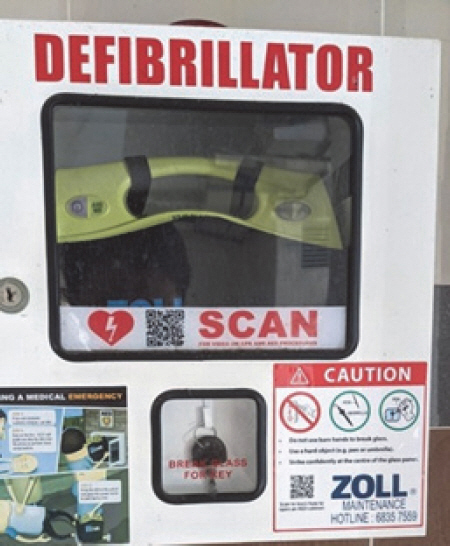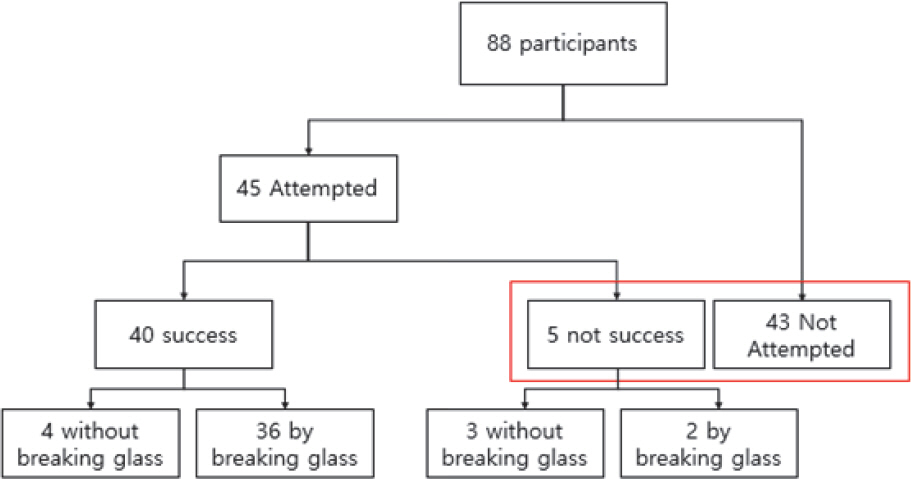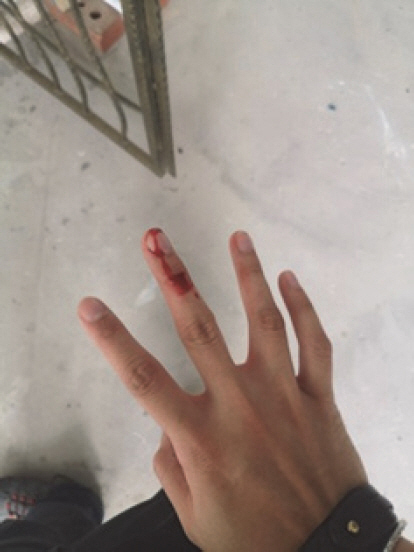1. Tanaka H, Ong MEH, Siddiqui FJ, Ma MHM, Kaneko H, Lee KW, et al. Modifiable factors associated with survival after out-of-hospital cardiac arrest in the Pan-Asian resuscitation outcomes study. Annals of Emergency Medicine 2018;71(5):
https://doi.org/10.1016/j.annemergmed.2017.07.484

3. Blom MT, Beesems SG, Homma PCM, Zijlstra JA, Hulleman M, van Hoeijen DA, et al. Improved survival after out-of-hospital cardiac arrest and use of automated external defibrillators. Circulation 2014;130(21):1868-75.
https://doi.org/10.1161/CIRCULATIONAHA.114.010905


5. Page RL. The AED in Resuscitation:It's not just about the shock. Trans Am Clin Climatol Assoc 2011;347:55
6. White AE, Poh JS, Pek PP, Shahidah N, Ng YY, Yap S, Ong MEH. Singapore Out-of-Hospital Cardiac Arrest Registry Report 2011-2018. November 2020. Republic of Singapore. Unit for Prehospital Emergency Care
9. Kim HS, Park JH, Kim KH, Bae SH, Jang JD, Lee MS. Factors associated with survival of out-of-hospital cardiac arrest by cardiopulmonary resuscitation of bystander in South Korea. Annals of RSCB 2021;25(6):20713-21
10. Choe MSP, Lee MJ. National Survey of awareness and training experience of automated external defibrillator. J Korean Soc Emerg Med 2019;30(4):301-8
11. Kurohi R. (2018, July 27) 3 Passers-by help save woman who had heart attack at Woodlands coffee shop. The Straits Times
12. Sarkisian L, Mickley H, Schakow H, Gerke O, Starck SM, Jensen JJ, et al. Longer retrieval distances to the automated external defibrillator reduces survival after out-of-hospital cardiac arrest. Resuscitation 2021;44:52
https://doi.org/10.1016/j.resuscitation.2021.11.001

13. Smith CM, Perkins GD, Vlaev I, Fothergill RT, Griffiths F. Identifying and overcoming barriers to automated external defibrillator use by goodsam volunteer first responders in out-of-hospital cardiac arrest using the theoretical domains framework and behaviour change wheel:A qualitative study. BMJ Open 2020;10:3Available from:10.1136/bmjopen-2019-034908

14. Hansen CM, Wissenberg M, Weeke P, Ruwald MH, Lamberts M, Lippert FK, Gislason GH, Nielsen SL, Køber L, Torp-Pedersen C, Folke F. (n.d.). Automated external defibrillators inaccessible to more than half of nearby cardiac arrests in public locations during evening, nighttime, and weekends. Circulation
https://doi.org/10.1161/CIRCULATIONAHA.113.003066

15. Sakai T, Iwami T, Kitamura T, Nishiyama C, Kawamura T, Kajino K, et al. Effectiveness of the new 'mobile AED map'to find and retrieve an AED:A randomised controlled trial. Resuscitation 2011;82(1):69-73.
https://doi.org/10.1016/j.resuscitation.2010.09.466


16. Johnson AM, Cunningham CJ, Zegre-Hemsey JK, Jessica K, Grewe ME, DeBarmore BM, et al. Out-of-hospital cardiac arrest bystander defibrillator search time and experience with and without directional assistance:a randomized simulation trial in a community setting. Simulation in Healthcare 2022;17(10):22-8.
https://doi.org/10.1097/SIH.0000000000000582


19. Tan S. (2021, August 23). Enquiry about AEDs in other countries
20. Folke F. (2020, September 16). Inviting Input for Literature Review for research on AED responder injuries
21. Ming Ng W, De Souza CR, Pek PP, Shahidah N, Ng YY, Arulanandam S, et al. MyResponder smartphone application to crowdsource basic life support for out-of-hospital cardiac arrest:The Singapore experience. Prehosp Emerg Care 2020;25(3):388-96.
https://doi.org/10.1080/10903127.2020.1777233


22. Andelius L, Malta Hansen C, Lippert FK, Karlsson L, Torp-Pedersen C, Kjær Ersbøll A, et al. Smartphone activation of citizen responders to facilitate defibrillation in out-of-hospital cardiac arrest. Journal of the American College of Cardiology 2020;76(1):43-53.
https://doi.org/10.1016/j.jacc.2020.04.073


23. Metelmann C, Metelmann B, Kohnen D, Brinkrolf P, Andelius L, Böttige BW, et al. Smartphone- based dispatch of community first responders to out-of-hospital cardiac arrest - statements from an international consensus conference. Scand J Trauma, Resusc Emerg Med 2021;29:Article number 29.
https://doi.org/10.1186/s13049-021-00841-1












